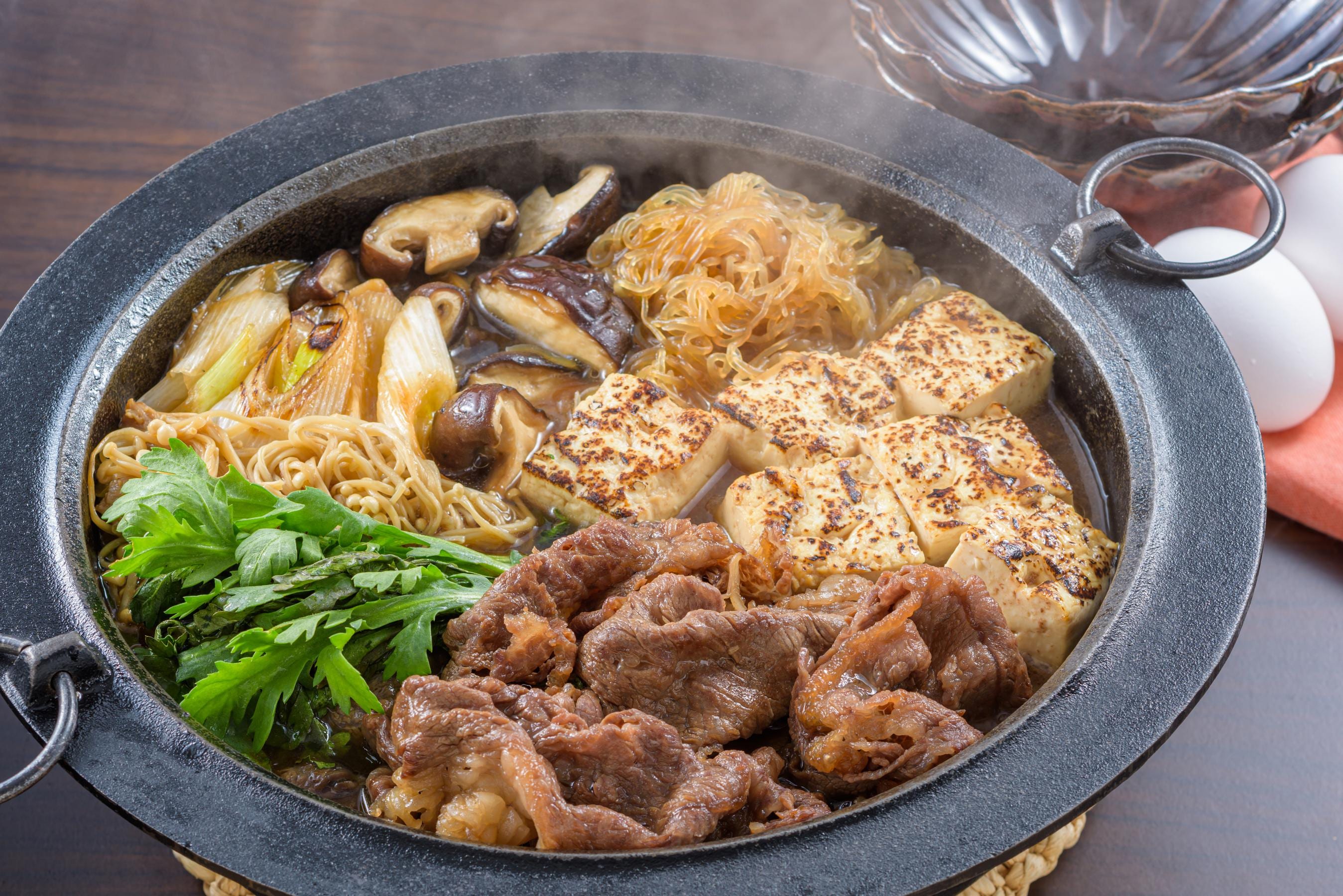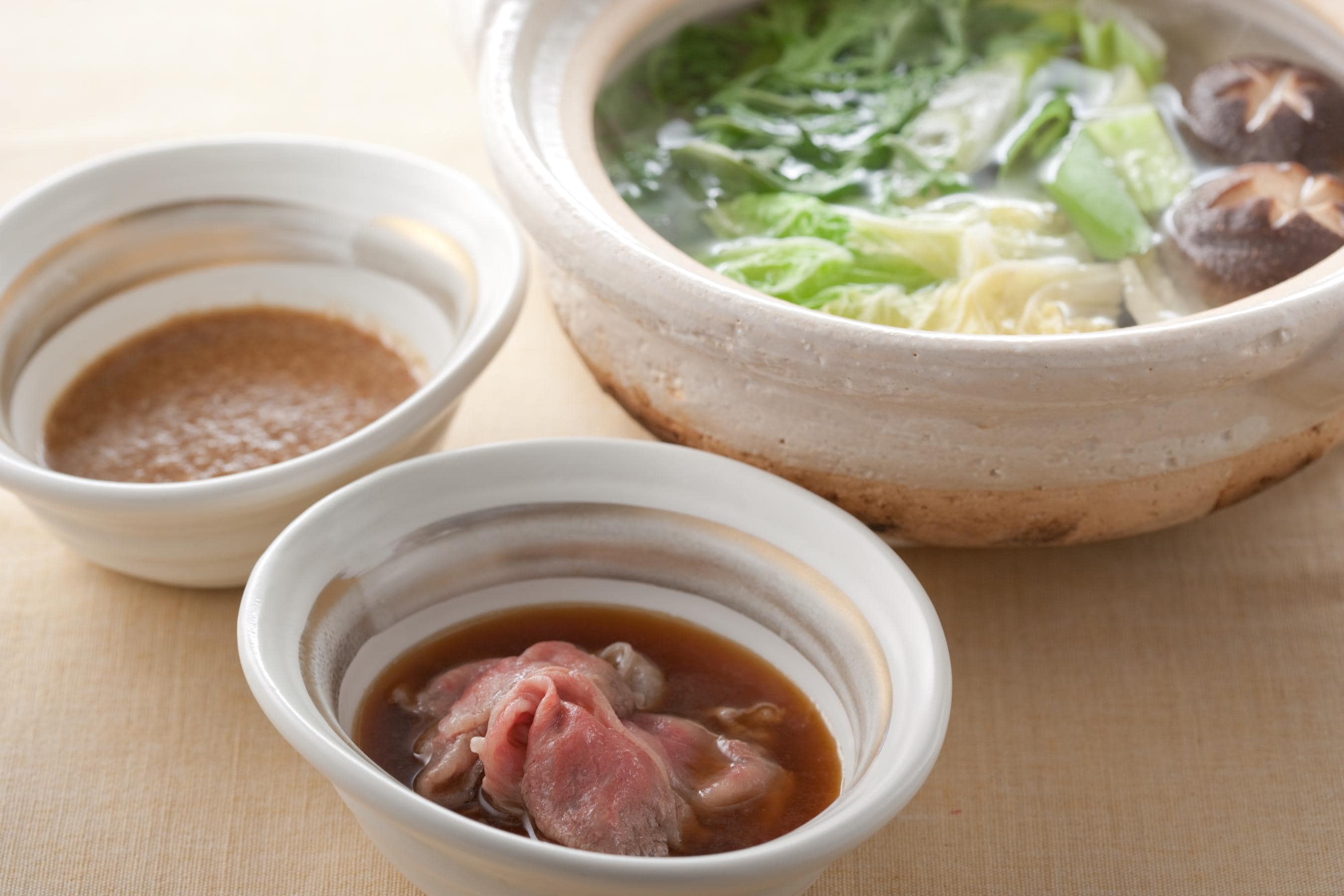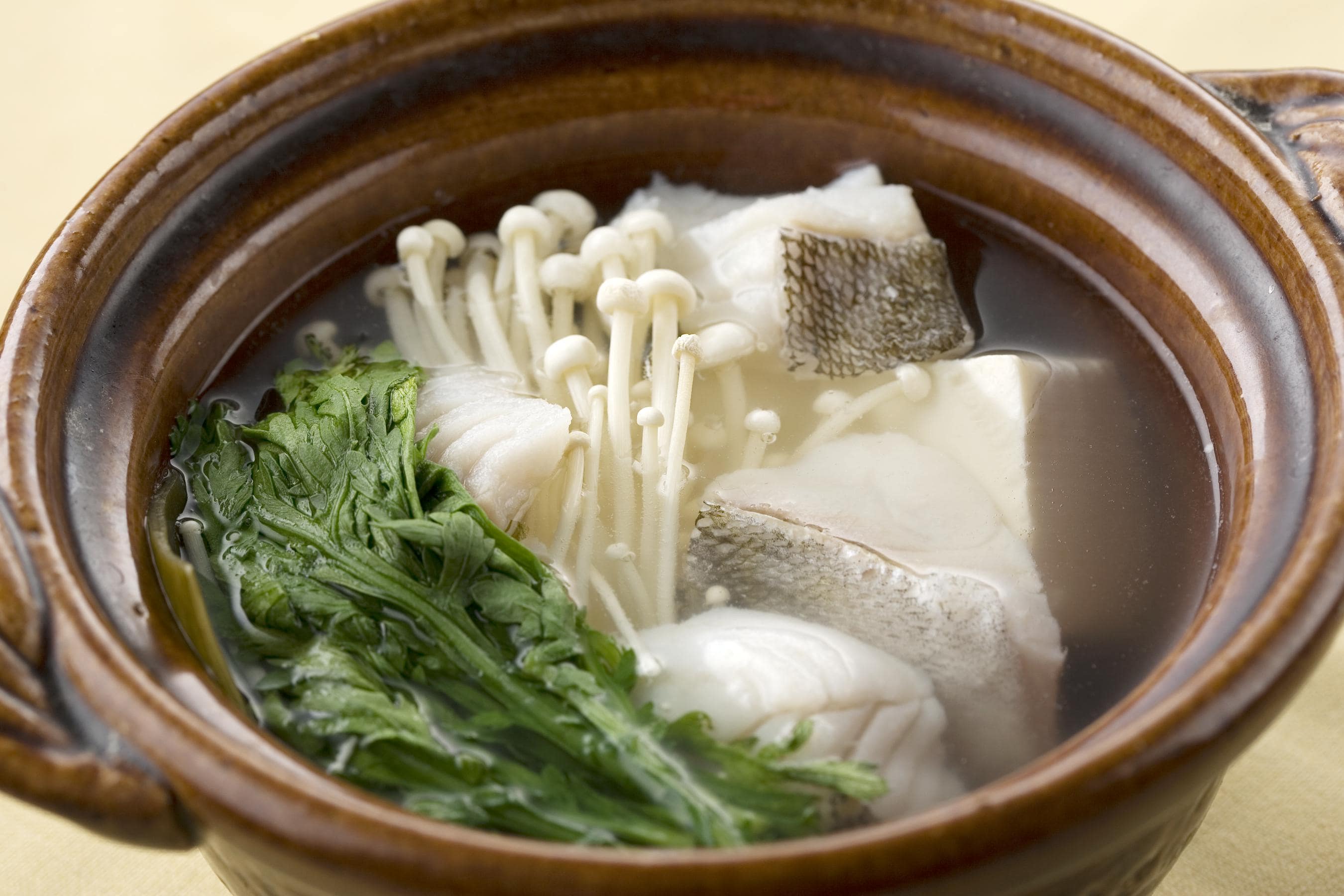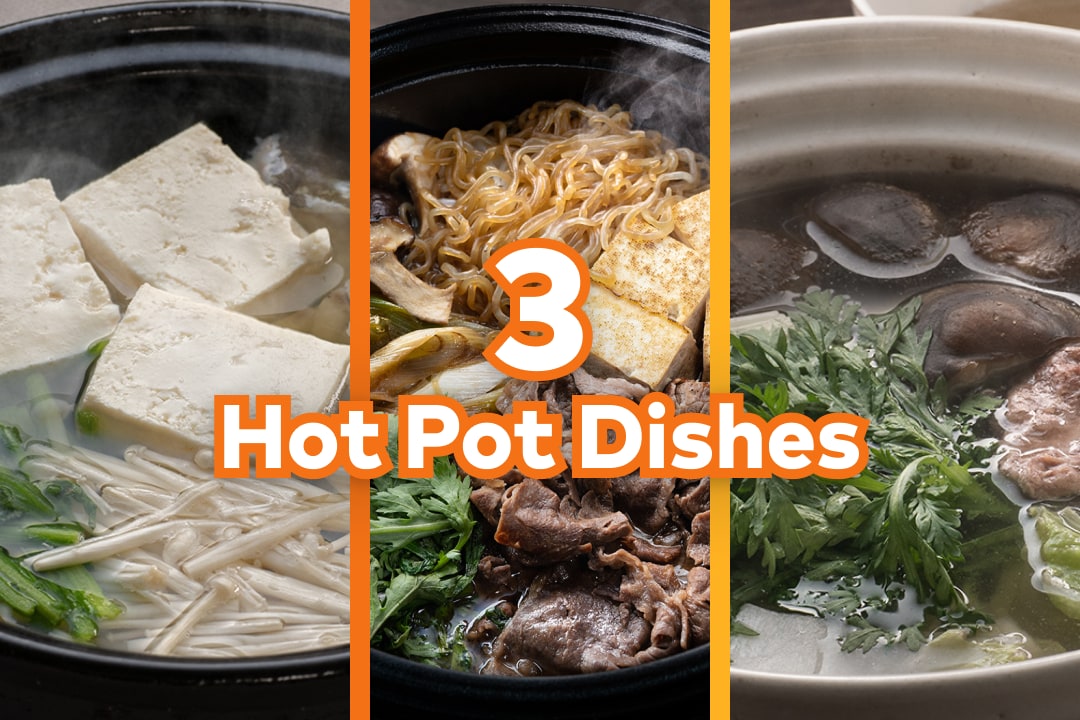
In the cold season, nabe hot pot cooking offers a delightful experience: it's prepared right on the table and shared with close friends and family. Why not try making it yourself?
Winter's delight: A feast with family and friends
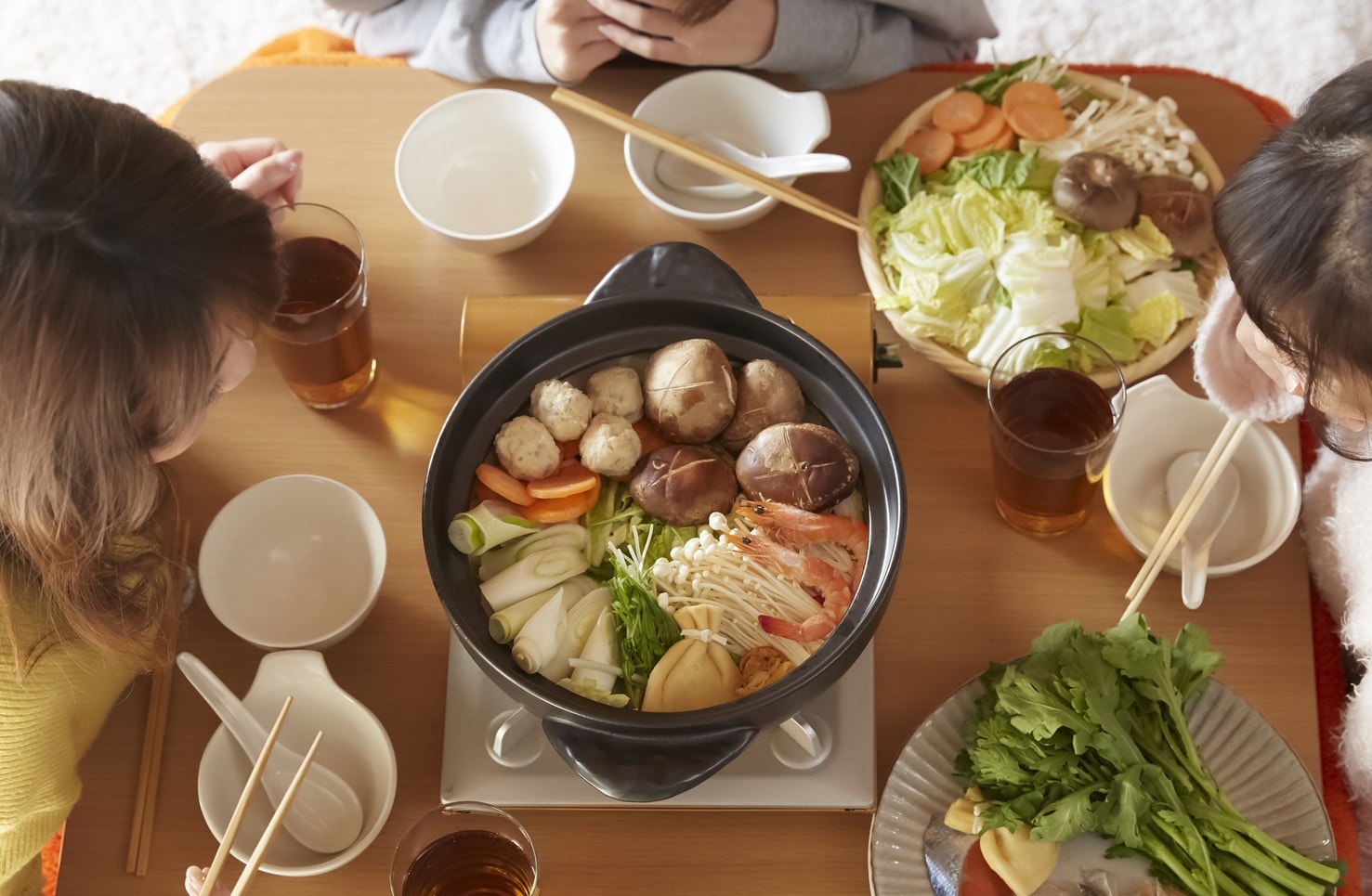
As winter sets in Japan, gathering around a nabe hot pot is a common scene at the dinner table. Nabe dishes offer a wide variety of recipes due to its wide range of ingredients and types of soups. For this type of communal cooking, prepare a “donabe” (Japanese clay pot) or an iron pot and a portable gas stove, and set them at the center of your dining table. Ingredients can be sliced and arranged on plates or trays, ready to be cooked and enjoyed right at the table.
Nabe dishes are loved not only because it is a well-balanced meal, but also because it stimulates our conversation while sharing time together. The person who decides which ingredients to add first and who to serve is affectionately called the "Nabe Bugyo" (Hot Pot Master).
Sukiyaki
Sukiyaki is a well-known nabe dish even outside of Japan. There are variations in the preparation between Kanto (Eastern Japan) and Kansai (Western Japan). In Kanto-style sukiyaki, a seasoning called "warishita" is prepared with soy sauce, mirin, sake, sugar, and dashi stock. The warishita is simmered before adding vegetables and meat. On the other hand, Kansai-style sukiyaki involves searing meat in beef fat first, then adding sugar and soy sauce, followed by vegetables and allowing them to simmer until cooked.
The recipe we're introducing here is an original one, where vegetables and meat are briefly seared before simmering in the warishita.
Sukiyaki
Shabu Shabu
Shabu Shabu is an easy, quick and delightful nabe dish. Begin by briefly dipping thinly sliced meats in hot broth or dashi. Once the meats change color slightly, quickly put them into flavorful sauces and dig in! It is most commonly enjoyed with beef (Gyu Shabu), pork (Buta Shabu), or sometimes yellowtail (Buri Shabu). The dish is often accompanied by sauces like ponzu, a blend of citrus juice and soy sauce, or a creamy sesame sauce.
What is ponzu?
Ponzu originally referred to juice from squeezing citrus fruits, but it now includes a mixture of citrus juice and soy sauce. Interestingly, the word "ponzu" originates from Dutch, the word "pons" meaning citrus juice. Kikkoman has delicious Ponzu products in each region. We welcome you to try our wide variety of flavors!
Shabu Shabu (Japanese Hot Pot)
Cod and Chrysanthemum Mini Hot Pot
Cod, especially its white flesh, is famous in a nabe dish called "tara chirinabe" or “tara chiri.” Along with cod, you'll find ingredients like tofu, edible chrysanthemum greens, and enoki mushrooms in this nabe dish. Enjoy with ponzu sauce and condiments including “momiji oroshi” (grated daikon with red pepper). This nabe dish is recommended when you want to enjoy the mild flavors of vegetables and fish together.
Cod and Shungiku Mini Hot Pot
Follow Kikkoman Global on Instagram!
These three dishes, and more, are featured on the Kikkoman Global Instagram account. This account not only showcases recipes from our Cookbook but also introduces Japanese food culture and content about Kikkoman's character Kikona. Be sure to visit and follow us for more culinary adventures!


